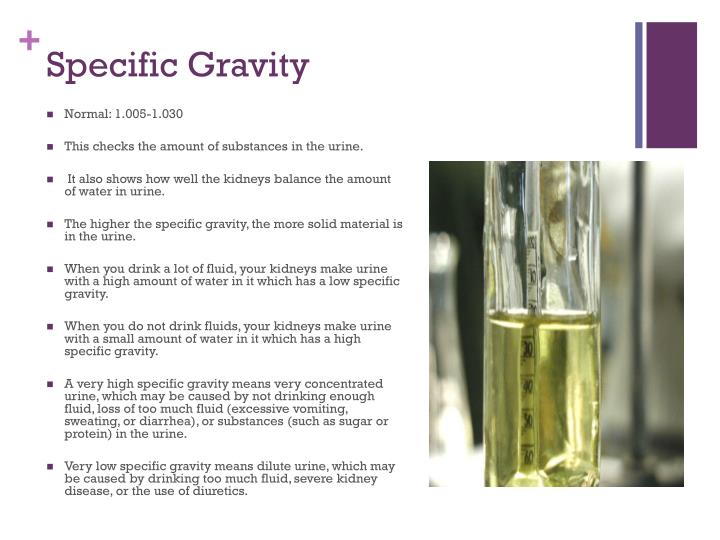
A darker amber colour suggests dehydration and that you need to drink more water, and very dark orange could be an indicator of jaundice/bile duct disorder or liver disorder. Normal urine colour usually ranges from a pale yellow colour to a little darker yellow first thing in the morning when urine is more concentrated. It is important to also rule out blood-contaminated urine from menstruation or haemorrhoids. Other times, red-coloured urine may indicate the presence of blood, suggesting disease or damage to the urinary system. foods like beetroot can colour the urine red. Sometimes the urine will be affected by diet - e.g. In the laboratory, the technician will check for clarity, colour and concentration of the urine. There are three testing phases in a complete urinalysis: the Visual Examination, the Chemical Examination and the Microscopic Examination. If the sample needs to be kept for more than an hour before it is collected and sent to the lab, it must be stored in a fridge (but for no longer than 24 hours). You will be given instructions as to what time of day to collect the sample (for example, first urination of the morning). It is recommended to obtain a mid-stream sample in a clean, sterile tub (typically provided by your healthcare professional). To determine the cause of bladder infections.To monitor progression and response to treatment of diseases such as diabetes, kidney impairment/disease/stones, lupus.Routine medical examinations such as yearly check-ups, admission to hospital, screening for diabetes, kidney disease, hypertension, liver disease.If you are experiencing pain in your lower abdomen or back, blood in the urine (either visible or found on a urine dipstick test), if you are experiencing pain when urinating or an increase in frequency of urination.

Urinalysis may be needed for a number of reasons, for example: It is also best to avoid strenuous exercise or eating any foods that could colour your urine before the test - e.g. If you are menstruating, close to your period or are taking any diuretics, it is best to tell your GP as they may wish to postpone obtaining a sample. Your GP may order urinalysis in a lab to test for kidney, metabolic disorders and urinary tract infections. A sample of 30-60mls of your urine is needed for urinalysis. UrinalysisĪ urinalysis is, as the name suggests, is an analysis of the urine. The nutrient molecules and some salts and water are reabsorbed back into the blood, while unwanted substances remain within the nephron to become a part of the urine. There are about 1,000,000 nephrons in each human kidney and nephrons are the active part of the kidney that produces urine while removing waste and excess substances from the blood. The blood is first filtered and all small molecules, including both nutrients and wastes, enter a nephron. Urine is made up of substances that are not used or needed by our cells, so they are the leftovers of metabolic processes (e.g., urea).

Blood passes through the kidneys, and next urine is formed and excreted.


 0 kommentar(er)
0 kommentar(er)
